Menu
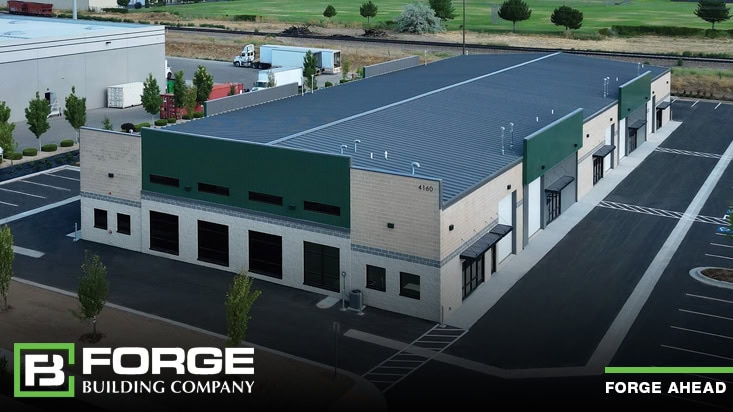
Flex space is a versatile, multi-use hybrid real estate asset that blends different functions, typically combining office, warehousing, and light industrial or retail space all under one roof. These small bay units are designed to accommodate various uses, such as a combination of office, industrial, and retail functions. These spaces can be quickly reconfigured to meet evolving business needs for administrative, operational, or customer-facing activities, making them ideal for small businesses and those requiring both professional and operational environments.
In today’s commercial real estate landscape, adaptability is everything. Businesses are rethinking their footprints, e-commerce is driving demand for smaller distribution hubs, and entrepreneurs need spaces that can grow with them. Flex space has quickly risen as a go-to answer, reshaping the commercial real estate market with its emphasis on versatility and efficiency.
Flex space isn’t just a trend; it’s a growing asset class fueled by powerful market forces:
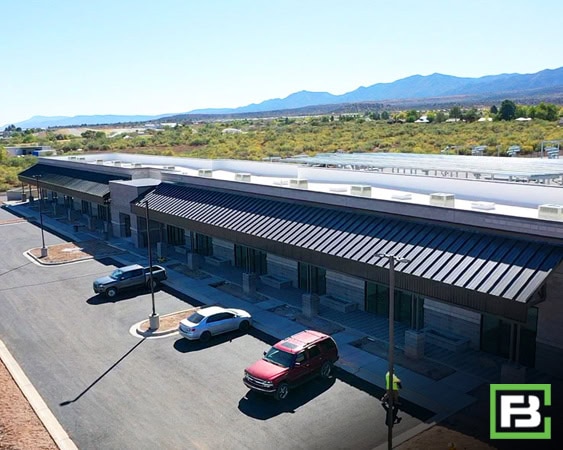 The Rise of Hybrid Work Models
The Rise of Hybrid Work ModelsAccording to a report, “Five Years After Covid,” demand for flexible workspaces across the U.S. and Canada is now 19% higher than it was pre-pandemic. And while supply has grown by 8% over the same period, it is not keeping pace, creating new opportunities for developers and investors to deliver where the market needs them most.
Building successful flex projects requires careful planning and foresight. Developers should focus on:
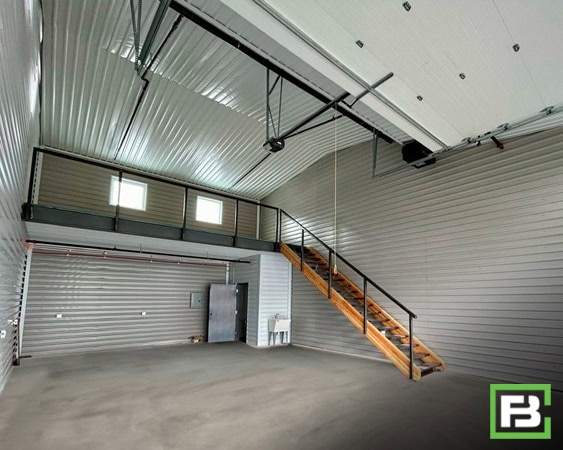 Site Selection
Site SelectionFlex space is no longer a niche product. It’s one of the fastest-growing categories in commercial real estate. Its adaptability, resilience, and ability to support modern business needs make it a compelling choice for both developers and investors.
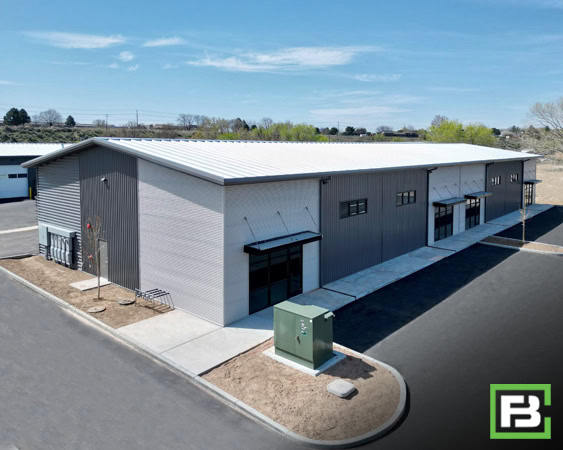 Industry analysts predict that flex spaces could comprise 30% or more of the total commercial real estate market by 2030, up from a niche segment just a decade ago. What began as a solution favored by startups, small businesses, and e-commerce entrepreneurs is now being embraced by larger corporations and logistics providers seeking adaptable real estate solutions (Loan Analytics, 2025).
Industry analysts predict that flex spaces could comprise 30% or more of the total commercial real estate market by 2030, up from a niche segment just a decade ago. What began as a solution favored by startups, small businesses, and e-commerce entrepreneurs is now being embraced by larger corporations and logistics providers seeking adaptable real estate solutions (Loan Analytics, 2025).
At Forge Building Company, we know that adaptability is the cornerstone of today’s commercial real estate development. With decades of experience in steel building design, we bring:
When it comes to flex space, choosing the right development partner is key. Forge Building Company provides the foundation, strategy, and expertise to ensure your investment is built for the future and turns your vision into reality. Let’s get started today.
Contributing Editor: Melissa Anderson, Forge Building Company
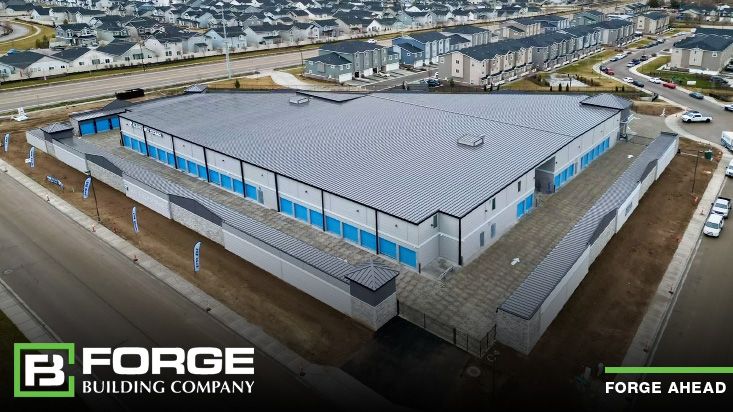
The self storage industry is evolving. As we enter 2025, this industry is well-positioned to adapt to the shifting landscape of increased mobility and shifting client expectations. Facility owners and operators who invest in flexible pricing, innovative technology solutions, and targeted regional marketing will be better equipped to thrive in this evolving market.
In our previous blog, “2025 Self Storage Industry Growth Projections and Trends,” we looked at top trends and innovations expected to shape the construction industry in 2025. From an investment standpoint, Self Storage still provides great opportunities for investors. The US market alone is expected to jump from $44.37 billion to $49.88 billion by 2029. This represents a Compound Annual Growth Rate of 2.37%1.
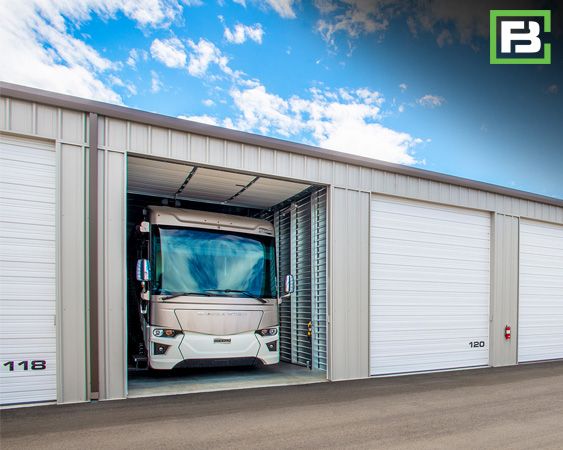 Price Matters. Price is a significant factor when it comes to self storage. In the Storable survey, 83% of respondents emphasized that price is a significant factor when choosing a storage unit. Affordable, flexible options will likely remain a key selling point for facility owners. Convenience and location also rank high, with 68% of respondents emphasizing the importance of accessible facilities.
Price Matters. Price is a significant factor when it comes to self storage. In the Storable survey, 83% of respondents emphasized that price is a significant factor when choosing a storage unit. Affordable, flexible options will likely remain a key selling point for facility owners. Convenience and location also rank high, with 68% of respondents emphasizing the importance of accessible facilities.This expansion has been fueled primarily by an increase in RV ownership and a rising population of boating enthusiasts, creating a demand for dependable storage solutions during periods of inactivity. Storage options may include uncovered storage, canopies (or covered storage), or storage condos (fully enclosed storage).
In our blog, “Investing in Storage Condominiums,” we address this sector of Boat and RV Storage as a great investment alternative.
Investors and facility owners should also consider the growing demand for short-term storage. With 79% of clients needing storage for six months or less, flexibility in rental terms and ease of extension could be a game-changer for attracting and retaining clients.
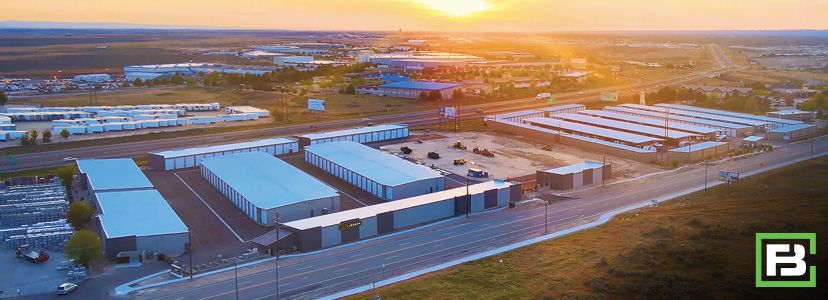
As more people plan moves, the demand for storage is projected to grow. Current facility owners must adapt by offering value-driven services while keeping prices attractive to stay competitive.
The global population is increasing. More people means more stuff creating a need to stash their belongings. With the increased cost of living, many young professionals are opting to rent rather than buy, living in apartments and condos with limited space.
Self storage is profitable. Revenue from self storage rentals and sales is on the rise. The US market alone is expected to jump from $44.37 billion to $49.88 billion by 2029. With high demand and significant cash flow potential, self storage is an appealing real estate investment.
The self storage industry shows no signs of slowing down, and recent trends explain why there are so many storage facilities. In our blog, “Self Storage is an Investment Alternative,” we discuss the primary reason investors look at this asset class is because it can be an inflation hedge. This is still true today.
Here’s what the Forge President and CEO have to say about “Self storage as an investment.”
Strong market fundamentals, smart investments in technology, and a growing client base all point to continued opportunities for self storage facility owners and investors. The demand for extra space isn’t going away anytime soon. For people and businesses with too much stuff and not enough room, self storage provides an ideal solution.
References
1. Davison, M. (2024, July 4). Storeganise. Retrieved from storeganise.com:
https://storeganise.com/blog/why-are-so-many-storage-facilities-being-built
2. Storable. (2024, October 22). Retrieved from storable.com:
https://www.storable.com/resources/learn/2025-self-storage-industry-outlook-trends-to-watch/
3. Investinselfstorage.com. (2024). Retrieved from StorageUnits:
https://investinselfstorage.com/2025-self-storage-industry-outlook-whats-ahead/
4. Verified Market Reports. (2024, November). Retrieved from verifiedmarketreports.com:
https://www.verifiedmarketreports.com/product/rv-and-boat-storage-market/
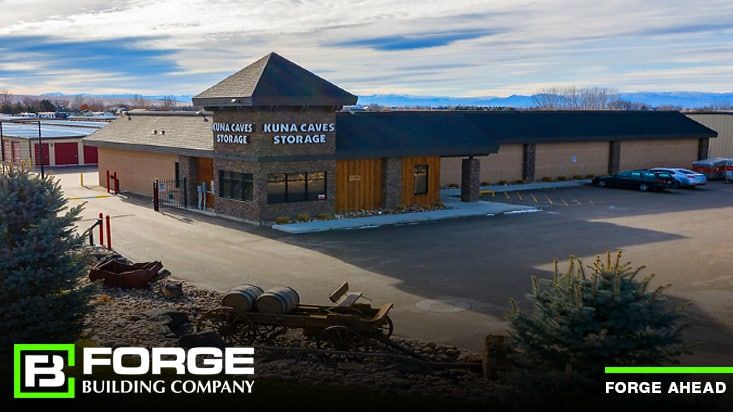
Construction costs, including those for self storage, are on the rise even though the amount of inflation fluctuate from location to location. If you’re planning to build or expand a self storage facility this year, it’s more important than ever to do your homework when it comes to research, design plans, and bids. (See our blog “A 10-Step Plan to Keep Your Next Self-Storage Development on Track.”
As the owner, it is key that you manage the day-to-day planning, coordination, and execution. It’s your vision, end stake, and money, so take the lead and educate yourself about the forces affecting the market.
In 2021, self storage facility construction spend in the United States dropped to $3.75 billion from its 2018 peak of $4.89 billion. This is a 19% 1-year decrease compared to 2020, a 926% 10-year increase, and a 294% 20-year increase. As the U.S. economy continues to grapple with the economic downturn caused by COVID-19, construction has slowed and will continue to be depressed in the short term despite increasing demand for self storage. (Neighbor.com, 2022)
Despite those statistics, the tremendous industry growth in this sector experienced over the last 25 years can be attributed to greater public awareness of the economic and personal advantages of this industry. Continued increase in demand, teamed with excellent investment potential, has made self storage one of the leading growth industries in the country since 1978 (The Parham Group, n.d.).
Given the current climate, below are some of the variables to be aware of, potential miscellaneous costs, bidding and contractual pitfalls, and other ways to mitigate overall development expenses.
 Within the last year the cost of single-story construction jumped from $65 to $85 per square foot. What this means is that with a $6 million, phase-one budget from the Small Business Administration, you’ll likely build closer to 40,000 square feet than 50,000 (Goodin, 2022).
Within the last year the cost of single-story construction jumped from $65 to $85 per square foot. What this means is that with a $6 million, phase-one budget from the Small Business Administration, you’ll likely build closer to 40,000 square feet than 50,000 (Goodin, 2022).
Annual price increases are very typical in the construction industry. COVID-19 over the last several years reduced steel manufacturing and stockpiling. Crippled supply chains have also caused prices to double. Today, however, steel production appears to be on the rebound, and demand will increase once the auto-chip deficit is over, and more cars and planes are built.
If you delay building or expanding your self storage property until prices stabilize, this could take months or years. The income benefit coupled with the growth and latest industry trends makes self storage definitely a great return on investment.
When you are considering building, construction cost is only part of your total development burden. There are many ways to reduce costs and avoid overruns when it comes to building your self storage property. The biggest way to avoid any pitfalls is to thoroughly review your potential self storage property in detail by use of a complete site plan. Look for:
It would be wise to leverage a civil engineer to review properties and local regulations to understand any potential extra costs that can be expected before you start your project.
To maximize your savings and optimize the cost of construction, it’s key to fully understand the expenses tied to certain building and site-design features that can lead to incremental extra dollars per square foot. Below are several other considerations that can impact your project costs. The team at Forge is here to help you make the best building determinations and evaluate your options based upon your budget.
Finally, pay attention to your roof. Many self-storage business owners make the common mistake of using screw-down roofing because it's generally more affordable. The team at Forge urges you to consider using standing seam roof panels instead because this installation doesn't require penetrating the roof with screws because of its joining rib design. The screws typically aren't a problem for the first year or so (depending on your environment), but those screws must be tightened or replaced over time. It's important to remember that each roof penetration increases the risk of leaks and ultimately disappointing your clients. Our services will help you retain your clients and protect their possessions. For more details, see Metal Building Re-Roofing with Standing Seam Metal Roof Panels.
Often times poor or incomplete bidding specifications can lead to higher construction costs. For this reason, every construction contract should include an addendum to list items that might otherwise be unaccounted for. These include:
 Full cleaning of walls and floors once construction is complete
Full cleaning of walls and floors once construction is completeAlso, if there are specific brand or quality requirements, these should be stated in the addendum with a note that no substitutions are permitted. A bid addendum helps guarantee that everything is communicated clearly to all parties involved.
Additional items you must account for in the total cost of self storage construction and financing include:
When bids are incomplete, this can lead to higher prices and unexpected cost overruns meaning you may then have to later downgrade a part of the construction.
Part of the project-planning process is to include a lease-up plan. The average self storage street rate for a 10x10 storage unit is $131/month, up 4% year-over-year.
The other good news is that the self storage industry has grown to more than 1.6 billion square feet of space so far in 2022 (StorageCafe.com, 2022). According to the latest Storage Café statistics, over the span of the last 5 years, 255.5 million square feet of storage space was built – that's equivalent to 16% of the total inventory. In 2021 alone, almost 44.3 million rentable square feet were finalized, an area that would cover either the whole of Central Park or the Grand Central Terminal. New supply in 2021 represents 3% of the existing inventory.
In even better news, a third of Americans planning a change of residence or needing more space at home reported that they use self storage. (Storage Cafe, 2022) A recent report from Storage Café found:
Self storage is relevant for both homeowners and renters who use it to better manage their belongings without cluttering their living space. In addition, with the COVID-19 pandemic, many clients started using self storage space for clearing space in their homes to work remotely.
These factors all result in greater facility value and the ability to recuperate project and construction expenditures more quickly. One of the other added benefits of commercial real estate is that it appreciates. Self storage owners also receive benefits from depreciation and amortization.
Your biggest expenses are in the land and building. Once you build, the cost doesn’t increase. Each year, you can typically raise rental rates to stay ahead of expenses and generate more profit. And, of course, when you sell, you’ll have an asset that’s worth more than when you built it due to inflation and the work you’ve put into increasing property value.
2021 was a record year for the number of self storage facilities sold. Higher occupancy and record rental rates have laid the groundwork for incredible increases in profit. This has also factored into newly constructed facilities still in lease-up being sold to buyers and providing multi-million-dollar returns for owners.
As you can see, there are a lot of factors that impact self storage construction costs. In the end, working with a company such as Forge to help put together a knowledgeable development team before you make an offer on land and properly executing each phase, from due diligence to bidding to design to operation, is necessary to keep everything on track and on budget. Give us a call! We’d love to help.
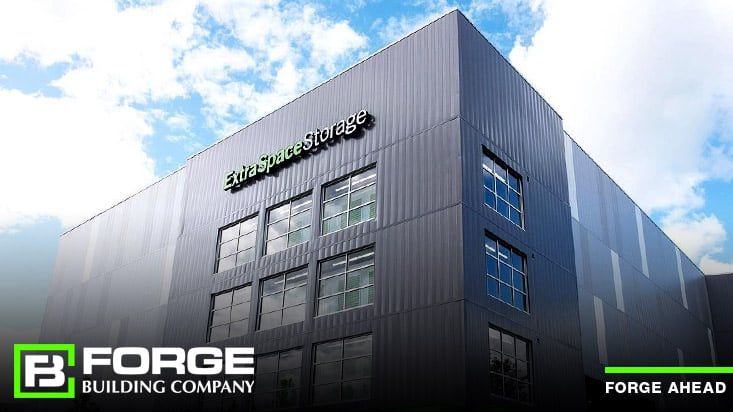
The self-storage industry has proven to be fairly recession-proof during the pandemic and offers many diverse investment opportunities and strategies depending on the location, according to a report from Trepp.
The report, titled “Self-Storage: Analyzing a ‘Recession-Resistant’ Sector,” looks at commercial mortgage-backed securities (CMBS) data. According to Trepp’s CMBS database, more than 1,700 CMBS loans totaling almost $16 billion were backed by self-storage properties across the US. It is one of the smaller property types in the private-label CMBS universe of over half a trillion dollars of loans, accounting for only 3% of the total CMBS outstanding balance.
The reason an individual would rent a storage unit is being driven by what the report refers to as the four Ds of self-storage: divorce, dislocation, death, and downsizing. Of course, there has been an abundance of these throughout the pandemic.
In addition, there were a number of trends that directly impacted the demand in the self-storage sector.
Another big factor contributing to this industry’s resilience are its net operating income margins which are among the highest of any real estate asset type at upwards of 60% to 70%, Trepp says, citing a Cushman & Wakefield report.
Those attributes have attracted a wide variety of players, including the five largest real estate investment trusts (REITs) that together own about 20% of the market:
That leaves thousands of other owners and other investors that have driven construction spending up by 584% from January 2015 to January 2020, the Trepp report says, citing census data on self-storage facilities.
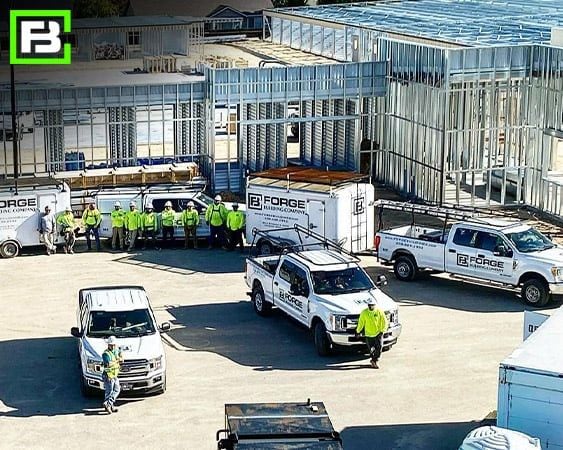 According to this same report, rising expenses such as wages and advertising are impacting the Self-Storage industry.
According to this same report, rising expenses such as wages and advertising are impacting the Self-Storage industry.
There is a lot of competition, especially in a segment that doesn't typically have a lot of amenities to prompt someone to drive farther to get to and feels restricted on how much rent can be raised.
So how do self-storage operators aim to provide a value-add? The Trepp report suggests the following:
The report also suggests remote management – operating a facility without an on-site manager through digital interactions with clients. This operating model could make it more feasible to invest in a small size storage facility in a small market.
Small towns and rural areas are typically not on the radar for big players. This creates a buyer’s market for potential acquisitions. So, this is a great time to look into that steal building construction investment idea.
Adding to the competition, the market continues to be of interest to big players looking for high-quality investments in the ‘recession-resistant’ commercial real estate space. So, for smaller players, the best options might be partnering with other investors in locally owned operations in small markets, or maybe even building your own, using the increasingly robust choice of self-service digital options.
Today it’s possible to build REAL wealth in the Self-Storage industry at a fraction of what it used to cost, meaning the unfair advantages are now available to individuals like you.
To find out more about how to invest in this growing industry, let Forge be your self-storage building contractor partner. See some of our completed projects.
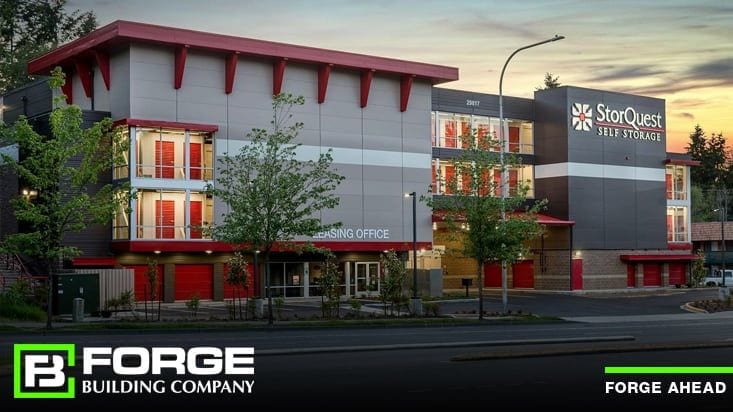
Very few places in the country are fortunate enough to avoid the frigid temperatures of winter every year. If you think it's cold outside, just imagine what it would be like in a storage unit. The freezing temperatures throughout the northern portion of the United States are cold enough to damage many belongings that are typically placed in storage. However, you can avoid damage caused by freezing temperatures by renting a climate controlled self storage unit, especially if you live in a region that experiences harsh winters.
Cold temperatures can be just as damaging to your belongings as to your body. Prolonged exposure to freezing temperatures can severely damage belongings commonly stored in a storage unit. Items to be especially cautious with include:
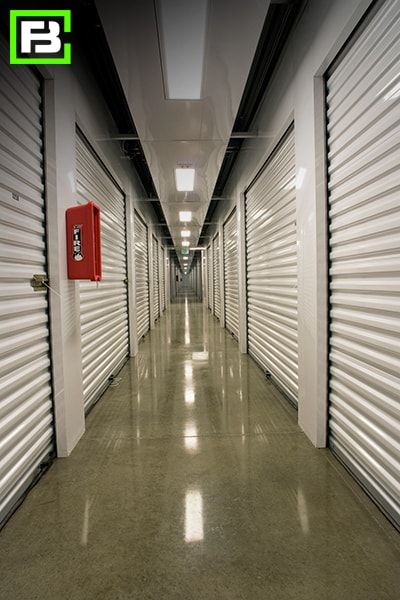 Electronics
ElectronicsFluctuating temperatures can create condensation inside electronics, causing irreparable damage. Likewise, anything with liquid already can crack due to expansion from freezing. This is especially true of battery cells, including those for cars, mowers, and other small engines, which can crack when frozen.
A temperature-controlled self-storage facility is both heated and cooled. Its purpose is to provide an environment suitable for preserving stored goods, so the temperature range will typically be higher or lower than what you would find in a home or office—usually heated to 55 degrees and cooled to 85.
While it’s commonly referred to as “climate-controlled” storage, the term “temperature-controlled” should be used unless the building also has a system to regulate humidity. Claiming to be climate-controlled while failing to address humidity might leave you open to legal trouble if the dampness damages a client's items. With today’s more efficient building insulation, it’s more important than ever to work with a reputable storage unit contractor to install a system that not only heats and cools but also monitors and removes humidity.
Let’s look at common uses, the benefits of temperature or climate control for self-storage facility owners and tenants, and some of the more critical design considerations.
The typical client who wants to rent climate-controlled storage has previously rented traditional storage with bad results and now wants to protect his or her belongings better.
Many people store unused items during the colder months of the year. Just as people store cold-weather items during the summer, you’ll often see people putting away summer belongings when the temperature drops. Storing seasonal items is an easy way to save space in your home. Here are a few seasonal belongings commonly stored during the winter.
Summer clothing – In a small living space, putting out-of-season clothing in a storage unit can make a big difference.
Another reason many people use storage during the winter is if they’re moving to a new home or apartment. While spring and summer are busier for real estate, people move year-round for various reasons. When moving, a storage unit can give you a place to store belongings between homes, making the entire process much more manageable.
Climate controlled self storage buildings offer several benefits for storage unit owners. First, you get increased land coverage. Compared to drive-up buildings, typically 30 to 40 feet wide, climate-controlled buildings can be up to 200 feet or more. This width reduces the amount of pavement necessary on the property and increases the amount of rentable space. The interior hallways are usually 5 feet wide and occupy only 15 to 20 percent of the space. This increased coverage can make it possible to develop on more expensive land in a better location than could be justified with traditional storage only.
Climate control can also serve as a market differentiator. Self-storage has penetrated just about every community in the country. Working with a quality self-storage contractor to incorporate climate control can set your site apart. So, while building and operating climate-controlled storage costs are higher, the increased rental rates are also significantly higher in most markets. These units usually rent for a 15 percent to 35 percent premium compared to standard units.
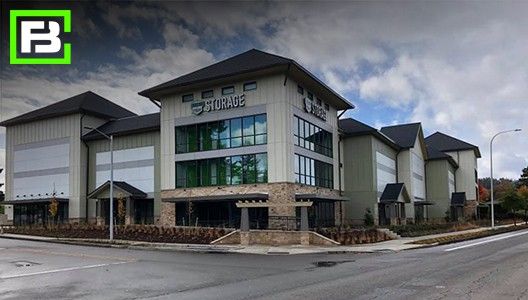 When it comes to the design of your temperature- or climate-controlled self-storage buildings, here are some common items to consider.
When it comes to the design of your temperature- or climate-controlled self-storage buildings, here are some common items to consider.
Costs. It’s common for commercial steel building developers to phase a project, but when planning a site with climate control, consider how the design will impact construction costs. The most cost-effective building is a large, wide structure.
Full vs. partial control. Some buildings are designed with both exterior-access ambient-temperature units and interior-access temperature-controlled units. While these projects allow for various unit types in a single structure, their popularity is declining. One reason is that the weather can create challenges when you build in a northern climate. Snow and ice will melt faster over the heated portions of a building, and if the runoff travels over a non-heated portion, ice dams may result.
Another reason is that stricter energy codes specify an insulated barrier between the foundations of climate-controlled and non-climate-controlled portions of a building. With the cost and complexity this adds to a project, it’s more cost-effective to design entirely climate-controlled buildings.
Unit access. Climate-controlled buildings are usually built with interior unit access via hallways, but more commercial steel building developers are building climate-controlled units with exterior access. These units should be equipped with insulated sectional doors (typically R-19 insulating value) rather than traditional roll-up doors. They should also be priced at a premium, as clients are willing to pay for the convenience of direct access.
Unit size. Interior-access buildings won’t contain units as large as those used for drive-up storage. The largest unit size in these buildings is typically 10-by-20.
Insulation. How much insulation do you need, and what kind will vary based on local building codes, weather conditions, and owner preferences? Projects can be built with spray-in foam, fiberglass bats, insulated panels or combinations. While building a project with a higher R-value will cost more, it pays benefits in two ways – your operating costs will be lower, contributing to a higher property value when it’s time to sell.
Roof pitch. You can choose from a variety of roof pitches for climate-controlled buildings. Roofs can be designed to allow room for the desired insulation thickness (R-value) directly under the panels. Or, on higher-pitched buildings, the insulation may be placed directly over the heated/cooled space ceiling, as you would find in a home, with insulation on the attic floor rather than under the rooftop.
Condenser location. Climate-control buildings commonly have recessed entries, which provide a staging area out of the weather and a place for the condenser unit. However, there are some options for putting the condenser unit outdoors. This may be the best option if there’s a place where it won't be vulnerable to client vehicles. Rooftop placement isn’t preferred due to the potential for creating leaks when penetrating the roof and possible damage from installers walking on the roof.
HVAC equipment. Your HVAC installer will guide you in choosing the equipment you need. However, HVAC equipment should be undersized for the space. It’ll run more often but consume less energy. In the summer, the result will be that the smaller HVAC system will circulate more air and do a better job removing humidity than a more robust system that runs for shorter intervals.
Most self-storage industry units across the U.S. are still the standard drive-up building; however, more sites are starting to include climate control. In some markets, many storage sites consist entirely of climate-controlled units. They can be an excellent addition to your storage development in the right market. Using insulation and central heating, a climate-controlled unit will protect your client's belongings in even the harshest winters.
As builders Forge Building Company is used to risk – from labor shortages to escalating steel and construction pricing. Since 2007, self-storage developers have relied on Forge to create custom steel self-storage buildings of every shape and size. From initial concept through completed construction, the Forge team of highly certified professionals are experts at guiding clients through every step of designing and building a self-storage project. This includes site plan assistance, custom engineering, and installation.
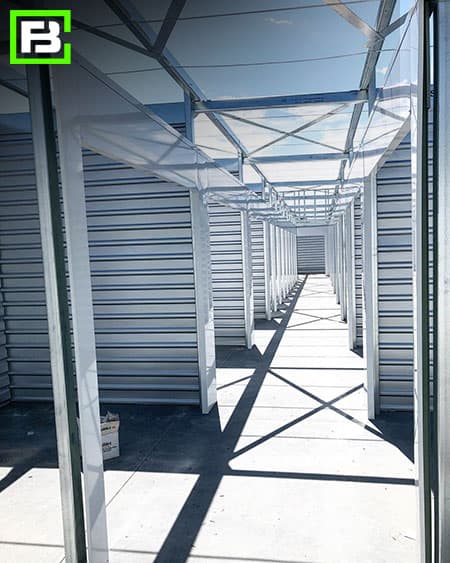 Over the last year, the company (and the industry as a whole) experienced varying degrees of impact because of the COVID-19 pandemic. Direct impacts ranged from a slowdown of available goods and labor through to suspensions and, in some instances, terminations of entire storage projects. Construction activities remained in flux in some states and cities depending upon whether construction was classified an essential business.
Over the last year, the company (and the industry as a whole) experienced varying degrees of impact because of the COVID-19 pandemic. Direct impacts ranged from a slowdown of available goods and labor through to suspensions and, in some instances, terminations of entire storage projects. Construction activities remained in flux in some states and cities depending upon whether construction was classified an essential business.
As a result, Forge took the opportunity to address both short-term and long-term business challenges, as well as formulating project-by-project solutions in the face of a new global and national environment. As a result, the company was able to forge ahead, building 45 of new self-storage steel buildings in 13 states, including Idaho, Washington, Oregon, California, Nevada, Arizona, New Mexico, Hawaii, Montana, Wyoming, Colorado, Michigan and Illinois through July of 2021.
The new realities touch almost every aspect of the construction process. Specifically, such issues as contract, scheduling, project suspension, projects being terminated and reinstatement; Occupational Safety and Health Administration (OSHA) and workplace safety compliance; workforce management; material, subcontractor and supply chain delays and impacts; risk management and insurance; claims avoidance or, alternatively, claims management; and the disputes process.
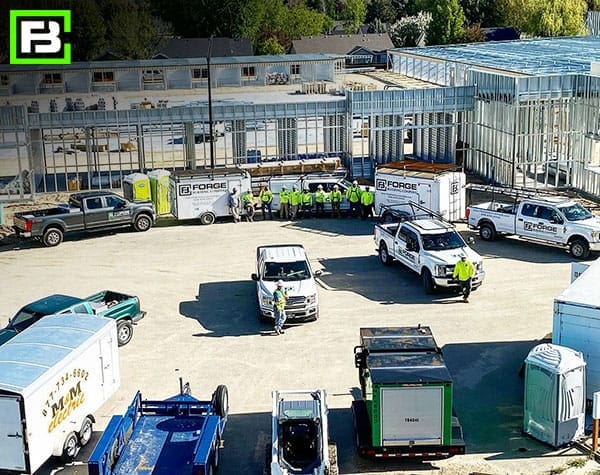
While there have only been a few reports of COVID directly impacting the U.S. construction workforce, Forge continues to be concerned with employee overall well-being. The good news is that the risk of transmission of this disease for those employed outside the healthcare sector is low, according to OSHA. Besides physical wellness, Forge is considering mental health, too, because many employers report anxiety among workers as one of the top issues brought on by the pandemic. In an informal Construction survey, 70% of respondents noted “employee anxiety” as their top concern, above material shortages and the prospect of government shutdowns.
In construction, everything comes down to time and money. Forge continues to be the leading nationwide self storage steel building contractor with an emphasis on self-storage developments. The Company has a 200+ field erect team that builds all projects for its clients, where other companies do not have their own teams and sub out the actual building proprietary. This provides consistent, innovative solutions for our clients. At Forge, the company listens to what its clients need to provide the most up-to-date, consistent solution using its proprietary methods.
Forge Building Company treats its clients, partners, and employees like family.
Meet the Forge Building Company team at the upcoming Self Storage Association Conference & Trade Show at the MGM in Las Vegas:
When: September 7-10, 2021
Where: Booth 135
The Self Storage Association is hosting its 2021 Fall Conference in person with an incredible lineup of industry expertise, executive participation and compelling talent. There’s a huge surge of deals and transactions happening in the self-storage industry, and Forge is no exception.
Forge has more than 45 development projects in the pipeline for the remainder of 2021, leading into 2022 nationwide. Still, there’s always room for more clients, and we’d welcome the opportunity to meet with you to make your company a part of the Forge family.
Unlike its competitors, Forge Building listens to clients' needs to provide the most up-to-date, consistent solution using its proprietary methods. The company’s experience, knowledge, and reputation in the industry provide its clients with stability. The treatment of its clients like family enables Forge to work closely with the client as a problem solver, providing the most innovative solutions for their building project.
Founded in 2007 and headquartered in Boise, Idaho, Forge Building Company was created after its founders, Hamish and Hayden, spent decades working in the steel-structure industry. Using their expertise in storage and focusing on the three pillars of buildings—designing, constructing, and erecting—led the company to a more diverse portfolio and stronger relations across the U.S.
Today, the company offers steel buildings for self-storage, RV and boat storage, car washes, airplane hangars, large warehouses, fish hatcheries, and craft breweries/restaurants. It also offers pre-engineered metal buildings for industrial and commercial applications.
With a strong portfolio of partners and clients, the Forge team has completed over 500+ jobs. It built over 50 million square feet, has over 250 workers, and remains privately owned. This solid team with complementary skills was founded on a rugby field in New Zealand over two decades ago and is now working to be the best in the industry.
For more information, please visit https://forgebuildings.com/ or to schedule an appointment, contact our Sales team at:
PH: 208-629-2952
Email: sales@forgebuildings.com
When it comes to self-storage construction, two names quickly come to mind: Hamish Bell and Hayden Farrell. Friends for over 30 years, these two have “forged” the path when it comes to self-storage developments nationwide.
 The two met as young boys in Papakura New Zealand where they found themselves on the same under 19 rugby team. Hayden had a strong silent attack and Hamish a fast wit and skills. The two of them knew right away they were great teammates and celebrated many wins at the local rugby club and at the legendary FORGE Club. This was the start of something much bigger to come.
The two met as young boys in Papakura New Zealand where they found themselves on the same under 19 rugby team. Hayden had a strong silent attack and Hamish a fast wit and skills. The two of them knew right away they were great teammates and celebrated many wins at the local rugby club and at the legendary FORGE Club. This was the start of something much bigger to come.
After finishing school Hayden headed back to the U.S. to work with his dad, Glen Farrell (“King of Storage”), at his installation company. He quickly recruited Hamish to join them. Both Hamish and Hayden worked hard building storage units and traveling throughout the U.S.
In 2001, the pair found themselves on a job in Boise, Idaho. They quickly joined the Lions Rugby team as teammates and fell in love with the city, the people, and the quality of life. In time, they both settled down, started families, and now call Boise home.
After decades spent working in the steel-structure industry, the pair created Forge Building Company, a nationwide building contractor. Using their expertise in storage and focusing on the three pillars of buildings: designing, constructing, and erecting, they led the company to a more diverse portfolio and stronger relations across the U.S.
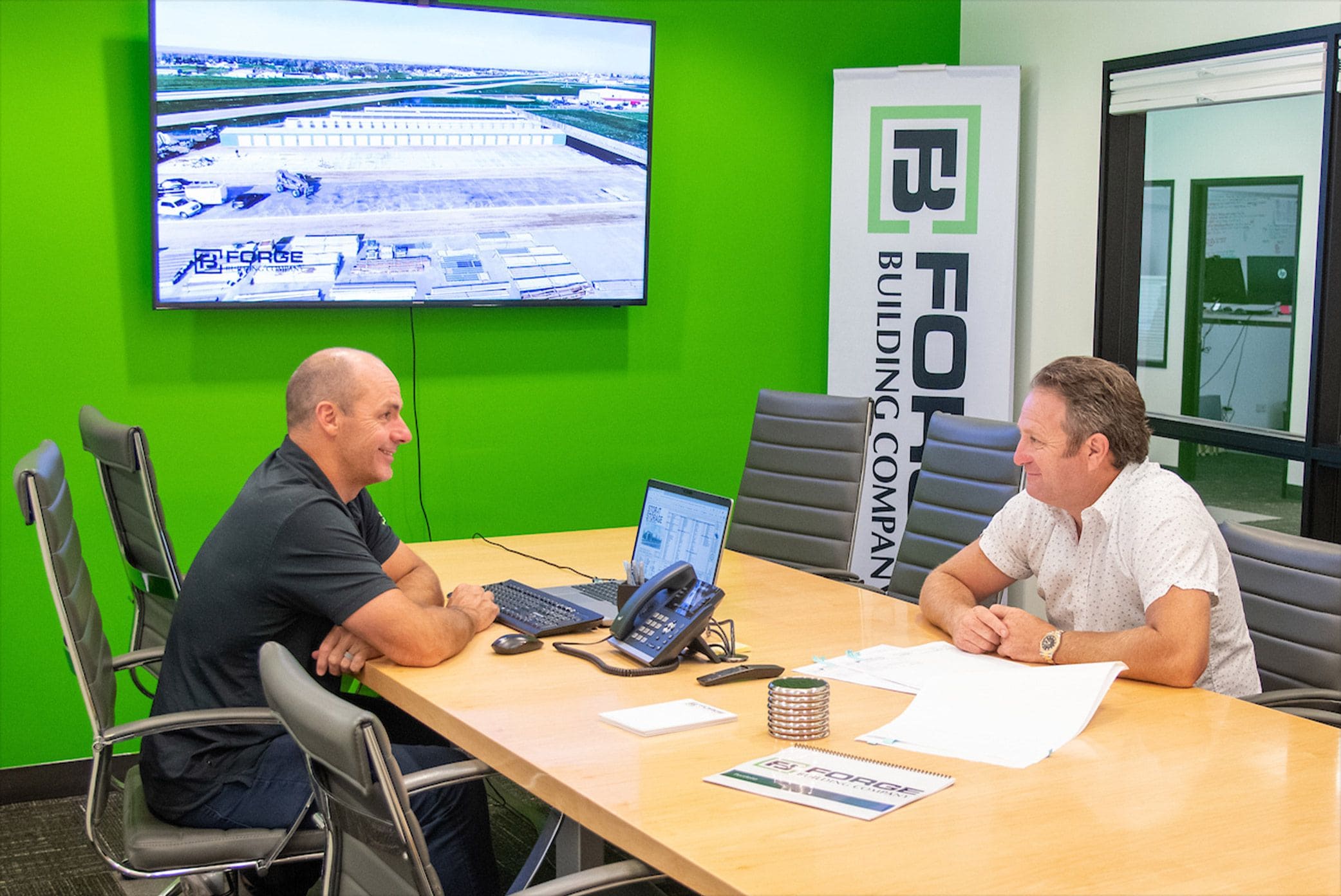 Today, the company offers steel buildings for self-storage construction, RV & boat storage, car washes, airplane hangars, large warehouses, fish hatcheries, and craft breweries/restaurants. Other offerings include pre-engineered metal buildings for industrial and commercial applications.
Today, the company offers steel buildings for self-storage construction, RV & boat storage, car washes, airplane hangars, large warehouses, fish hatcheries, and craft breweries/restaurants. Other offerings include pre-engineered metal buildings for industrial and commercial applications.
Forge makes client satisfaction a priority and strives for exceptional relationships with its c;ients. The company works with clients from the beginning to the end to design, supplying and installing a facility to be proud of. Its team ensures every step of the process is met with confidence, pride, and quality of performance. The company’s team of experienced erectors work quickly and professionally on even the most complex project. Few builders in the industry have a team as loyal and dedicated as Forge.
With a strong portfolio of partners and clients, the Forge team has completed over 500+ jobs built over 50 million square feet, has over 200+ employees, and remains privately owned.